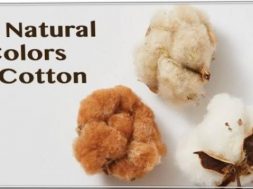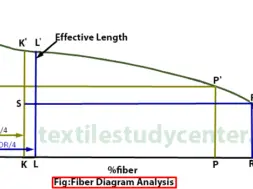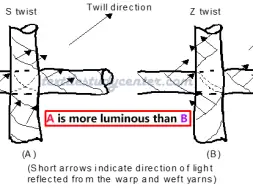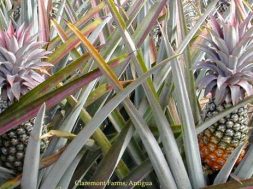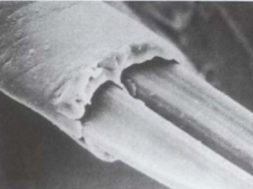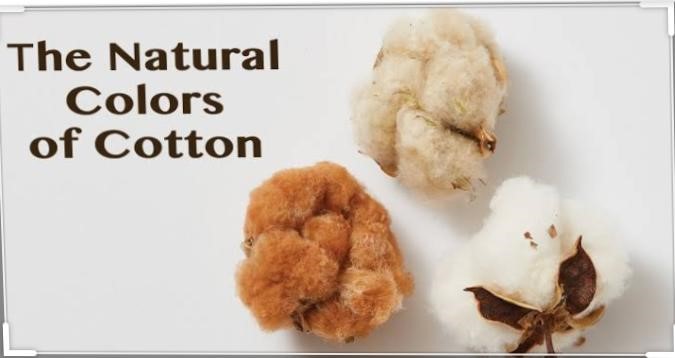
Naturally Colored Cotton
Naturally Colored Cotton
Naturally colored cotton is cotton that has been bred to have colors other than the yellowish off-white typical of modern commercial cotton fibres. Colors grown include red, green and several shades of brown. The cotton’s natural color does not fade. Yields are typically lower and the fiber is shorter and weaker but has a softer feel than the more commonly available “white” cotton.
This form of cotton also feels softer to the skin and has a pleasant smell. Naturally Colored Cotton is still relatively rare because it requires specialized harvest techniques and facilities, making it more expensive to harvest than white cotton. By the 1990s most indigenous colored cotton landraces or cultivars grown in Africa, Asia and Central and South America were replaced by all-white, commercial varieties.

History
Naturally colored cotton is believed to have originated in the Americas around 5000 years ago in the Andes. Naturally colored cotton today mostly comes from pre-Columbian stocks created by the indigenous peoples of South America (Vreeland, 1999). Mochica Indians could be attributed with growing naturally colored cotton of myriad hues, which they maintained for over the last two millenniums on the northern coast of Peru.
Colors
Natural color in cotton comes from pigments found in cotton pigments and produce shades ranging from tan to green and brown. Naturally pigmented green cotton derives its color from caffeic acid, a derivative of cinnamic acid, found in the suberin (wax) layer which is deposited in alternating layers with cellulose around the outside of the cotton fiber .While green colored cotton comes from wax layers, brown and tan cottons derive their color from tannin vacuoles in the lumen of the fiber cells.

Benefits
There is experimental evidence to demonstrate that naturally pigmented cottons, especially green cotton, have excellent sun protection properties, when compared with unbleached white cotton that needs to be treated with dyes or finishes to obtain similar properties. It is hypothesized that the pigments in naturally pigmented cotton fibers are present to provide protection from ultraviolet radiation for the embryonic cotton seeds, however they can also provide protection from the sun’s harmful rays for consumers who wear garments manufactured from these naturally pigmented fibers. The UPF values of the naturally pigmented cottons examined in a university study remained high enough, even after 80 AFUs (AATCC Fading Units)of light exposure and repeated laundering, that the fabrics merited sun protection ratings of “good” to “very good” according to ASTM 6603 voluntary labeling guidelines for UV-protective.
Limitations
The naturally colored cotton has a small fiber and is not suitable for heavy machine spinning. Due to smaller fiber, it becomes unpractical to use naturally colored cotton for clothing manufacturers. But now, colored cotton is literally squeezed in with the conventional white cotton to make its fiber longer and stronger than other naturally colored cotton to be used in typical looms. Since this hybrid cotton fiber is stronger, it is being used by Levis, L.L. Bean, Eileen Fisher, and Fieldcrest for clothes like khakis.
Upgrade in Technology
Naturally colored cotton had a smaller fiber which was not suitable for mechanical looms used today, so this kept it from entering the commercial market.
In 1982, Sally Fox a graduate in Integrated Pest Management from University of California with a master’s degree started researching on colored cotton and integrated her knowledge and experience in technology and introduced first long fiber of naturally colored cotton.
Sally Fox later started her company, Natural Cotton Colors, Inc. and got patents in different shades including: green, Coyote brown, Buffalo brown, and Palo Verde green under FoxFiber.
Later on the technology was further improved by a cotton breeder Raymond Bird in 1984. Bird began experimenting in Reedley, California, with red, green, and brown cotton to improve fiber quality. Later on Raymond Bird along with his brother and C. Harvey Campbell Jr., a California agronomist and cotton breeder, and formed BC Cotton Inc. to work with naturally colored cottons. Naturally colored cotton usually come in four standard colors – green, brown, red (a reddish brown) and mocha .
Use of dyes
Naturally colored cotton is unique and exceptionally different from white cotton as it does not need to be dyed. According to agronomists, the cost of dyeing could be up to half of the value, and also environmentally friendly, as it eliminates disposal costs for toxic dye waste. According to Dr. Frank Werber, National Program Leader for Fabric and Materials, Agriculture Research Service, USDA, naturally colored cotton is ecologically valid as well as economical. Elimination of dyeing in production could save from $.60-1.50 per pound of fabric. Naturally colored cotton is also resistant to change as compared with the conventional dyed white cotton. After laundering, the color becomes stronger and more intense, a characteristic documented during research studies at Texas Tech University. The length of time required to “bring out” the color varies with color and variety. Eventually, the colors may start to return to their original color. Some naturally colored cotton darkens with exposure to the sun. However, green is less stable and fades to tan when exposed to sunlight.
Cost
Due to the non-industrialized product naturally colored cottons yield less per acre, but growers are paid higher prices for their harvest. In 1993, colored cotton prices ranged from $3.60 to $4.50 per pound compared to conventional white cotton at $0.60 to $0.90 per pound.
(218)
